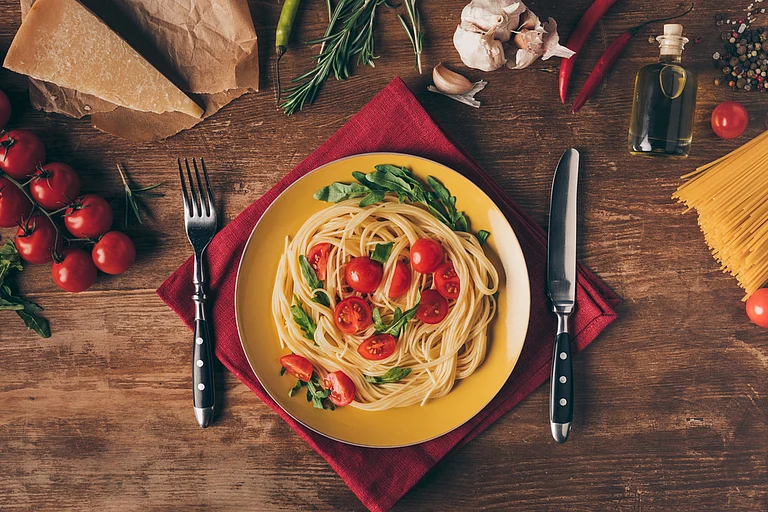India's food service market is likely to cross USD 125 billion by 2030, with the organised section expected to double from its current level and overtake the unorganised segment, according to a report.
Indian Food Service Market Projected To Cross USD 125 Bn By 2030: Report
India's food service market is likely to cross USD 125 billion by 2030, with the organised section expected to double from its current level and overtake the unorganised segment, according to a report
In 2025, the food service market in the country is estimated at USD 78 billion, as per the report titled 'How India Eats' by Swiggy and Kearney.
The food service market stood at USD 49 billion in 2019 and is estimated to reach over USD 125 billion by 2030, the report said.
The organised segment will drive over 60% of the overall growth in food services, and overtake the unorganised segment, it added.
As the food services spending of a country increases with GDP per capita, the report said India's such spending is expected to witness high growth over the next seven years.
The food services segment in India presents a massive headroom for growth, with the current contribution to GDP at 1.9% compared to 5% in China and 6% in Brazil, the report noted.
"This growth is an outcome of unstoppable consumer demand supported by resilient supply," the report said, adding that cloud Kitchens, QSRs and dessert parlours are expected to lead the charge with above-average growth.
While rising incomes, digital adoption and growing appetite for convenience will comprise the macro story behind this growth, the report pointed out that the Indian consumer is experimenting more with 20% growth in unique cuisines ordered per customer, and 30% growth in restaurants ordered from per customer.
Healthy and 'better-for-you' meals are growing at 2.3 times the overall orders, focused on increasing protein intake, watching calories and cutting down on added sugar, the report said.
The food services sector is seeing two "exciting frontiers of growth" in India, with the rediscovery of the country's rich culinary heritage and embracing global culinary diversity like never before, it added.
Hyper-regional cuisines like Goan, Bihari and Pahari are growing at 2-to 8-times of mainstream cuisines, and at the same time "Korean, Vietnamese and Mexican cuisines are becoming mainstream with growth indices of 17x, 6x and 3.7x (respectively)", it noted.
Local Indian beverages like 'buttermilk' and 'sharbat' are growing at over 4-6x of overall beverages, pushing global QSRs to innovate for India, while "Boba Tea and Matcha Tea have seen an 11x and 4x surge in search volumes, respectively".
Swiggy Food Marketplace CEO Rohit Kapoor said, "In a span of just over a decade, the industry has seen disproportionate evolution...On one hand, consumers are demanding affordability in familiar cuisines like Indian and Italian, and on the other hand, adopting Matcha and Boba Tea like never before".
Dining-out growth beyond the top eight cities is two times that of the top eight cities, with corporate, industrial, education and tourist hubs leading the charge, Rajat Tuli, Partner, F&B Lead, QSR Asia Lead at Kearney said.
"What we are witnessing is a fundamental broadening of India's food economy. Growth is no longer concentrated in a few metros but is being shaped by a wider set of cities where consumers are more experimental, more health-aware, and more value-seeking than ever before..." he added.
Tuli pointed out that Gen Z offers high promise, "growing 3x of other cohorts in the dining-out segment", while demanding innovations like coffee raves and Instagram-worthy locations and menus.
